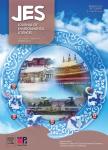Remediation of Ni^(2+)-contaminated water using iron powder and steel manufacturing byproducts
Remediation of Ni^(2+)-contaminated water using iron powder and steel manufacturing byproducts作者机构:Department of Environment Engineering Zhejiang University Hangzhou 310027 China
出 版 物:《Journal of Environmental Sciences》 (环境科学学报(英文版))
年 卷 期:2006年第18卷第3期
页 面:464-467页
核心收录:
基 金:The National Natural Science Foundation of China(No. 20407015)
主 题:zero-valent iron reduction remediation Ni^2+
摘 要:Steel manufacturing byproducts and commercial iron powders were tested in the treatment of Ni^2+-contaminated water. Ni^2+ is a priority pollutant of some soils and groundwater. The use of zero-valent iron, which can reduce Ni^2+ to its neural form appears to be an alternative approach for the remediation of Ni^2+-contaminated sites. Our experimental data show that the removal efficiencies of Ni^2+ were 95.15% and 94.68% at a metal to solution ratio of 20 g/L for commercial iron powders and the steel manufacturing byproducts in 60 min at room temperature, respectively. The removal efficiency reached 98.20% when the metal to solution ratio was 40 g/L for commercial iron powders. Furthermore, we found that the removal efficiency was also largely affected by other factors such as the pHs of the treated water, the length of time for the metal to be in contact with the Ni^2+-contaminated water, initial concentrations of metal solutions, particle sizes and the amount of iron powders. Surprisingly, the reaction temperature appeared to have little effect on the removal efficiency. Our study opens the way to further optimize the reaction conditions of in situ remediation of Ni^2+ or other heavy metals on contaminated sites.



